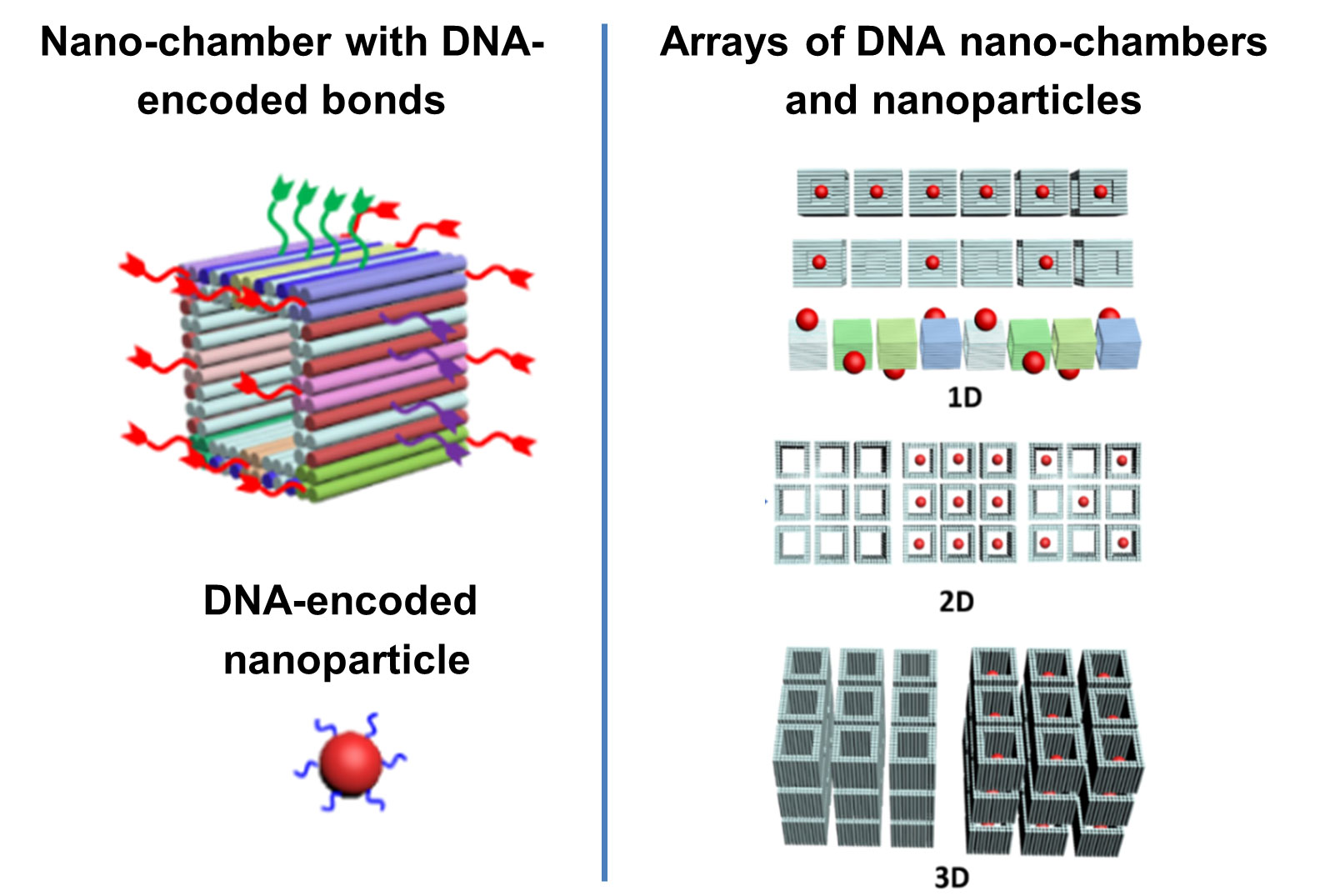Scientists Use DNA to Assemble Complex Nanomaterials
Researchers create DNA nano-chambers with bonds that can control the assembly of targeted nanoparticle structures.

The Science
In nature, DNA contains the instructions for the cells that allow life to grow, thrive, and reproduce. Researchers see great potential in DNA for its ability to direct assembly of a wide range of customized artificial materials. Scientists have developed a way to design and assemble artificial DNA objects tens of thousands of times smaller than a human hair. These objects can host nanoparticles and link them together into complex structures. Researchers recently extended this approach to include the tunable construction of complex 1, 2 and 3-dimensional structures. The method forms DNA strands into hollow cubes that can carry nanoparticle cargoes. The DNA strands that extend from the cube are encoded with specific assembly directions. This binding information allowed the scientists to precisely control the orientation of the objects in each direction at each step along the assembly pathway.
The Impact
Scientists are excited about DNA-directed assembly for its potential in next-generation applications. For example, these materials could make nano-robots for use in manufacturing and medicine or new materials to harvest light for energy. This research controlled the creation of complex nanostructures using molecular design and nanoscale programming of DNA for assembly. This approach allows scientists to control the orientation and position of building blocks via each individual bond connecting those blocks. It represents an important advance in the use of DNA for assembling new materials.
Summary
The assembly of nanoscale objects into complex, predetermined structures requires control over the type and direction of the linkages connecting those objects. Scientists have made progress in their ability to design complex nanoscale objects. However, researchers face challenges in precisely assembling these objects as designed with full control over how they bind together. This requires a fundamental understanding of the assembly pathways. In this research, scientists developed a straightforward strategy for creating a cube-shaped DNA nano chamber (DNC) with fully prearranged DNA bonds encoded with all the information needed to direct assembly as designed along each of the three axes of the chamber. The researchers built one-, two-, and three-dimensional ordered arrays of DNCs by fine tuning the directionality of DNA bonds. The researchers also developed computational methods to predict structure formation in these systems. The DNC can host nanoscale cargoes such as metal ions. This allows for the construction of complex organizations of nano cargoes with controlled architectures in a fully prescribed manner across much larger length scales. This effort was greatly enhanced by use of the Transmission Electron Microscopy (TEM) facilities at the Center for Functional Nanomaterials (CFN), a Department of Energy user facility. The researchers used the TEM to directly visualize the DNCs and their organized arrays. They used the X-ray scattering capabilities at the CFN and the National Synchrotron Light Source II (NSLS II), another DOE user facility, to provide additional structural analysis.
Contact
Oleg Gang
Columbia University
og2226@columbia.edu
Funding
The work was supported by the DOE Office of Science, Basic Energy Sciences program’s Division of Materials Sciences and Engineering. This research used resources of the Center for Functional Nanomaterials and NSLS II, which are DOE Office of Science facilities at Brookhaven National Laboratory.
Publications
Lin, Z., et al., Engineering Organization of DNA Nano-Chambers through Dimensionally Controlled and Multi-Sequence Encoded Differentiated Bonds, Journal of the American Chemical Society 142, 17531 (2020). [DOI: 10.1021/jacs.0c07263]
Highlight Categories
Performer: University , SC User Facilities , BES User Facilities , NSLS , CFN



